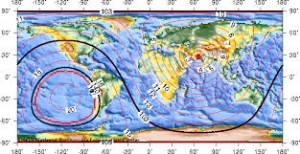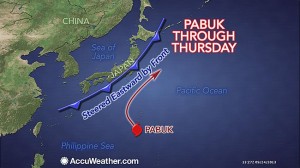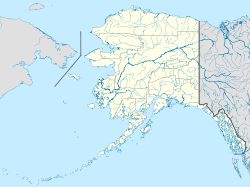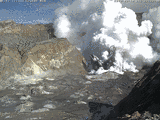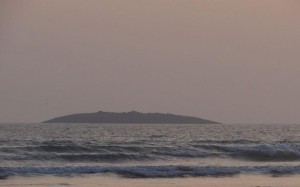
A small island rose out of the Arabian Sea after a 7.8 earthquake in Pakistan – Photo off Twitter: @Senator_Baloch
On Tuesday, September 24, 2013, a series of large earthquakes hit Awaran, Pakistan northeast of the Persian Gulf and the Gulf of Oman.
The largest quake was 7.8 in magnitude (now downgraded to a 7.7 magnitude), and local reports from the region initially estimated at least 150 people were buried beneath the rubble.
Chaotic Region
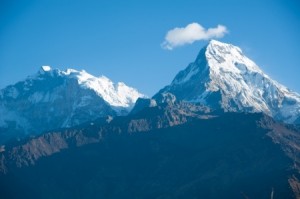
The Himalaya Mountains have been pushed up north of India due to compression.
- subduction (one plate goes under another)
- large-scale transform faulting (plates slip and slide past one another)
- compression (mountain building and crustal extension)
The Earth’s crust is very thick here due to compression, which forms the Himalaya Mountains. Because of the three different types of crustal movement in and around this part of the world, many earthquakes occur in this region. As the Earth’s axis continues to wobble and shift, we may see future earthquakes increase in magnitude north of the Middle East and within the Indian Ocean.
Head’s up.
Rising From The Sea
No one expected, however, to see a new island rising from the sea – and instantly! This sounds like something from the Dreamworks studios.
Local news crews filmed the rocky uplift rising out of the Arabian Sea while a crowd of bewildered people (still shaking from the earthquake) gathered on shore to witness this rare phenomenon.
Wouldn’t you love to have seen this ?
The earthquake was so powerful, it opened a chasm that pushed the seabed up. This created a small, mountain-like 60′ island to rise out of the Arabian Sea about 600 meters (656 yards) visible off Pakistan’s coastline.
Mystery Island
Over time, this new island may continue to grow in size – or it may wash itself out and sink back beneath the ocean – time will tell. This is how many of the islands that we “see” today formed in the Earth’s past.
Scientists are arguing about its origin and importance, with some saying that this is simply “mud rising” from a mud volcano, and is no big deal. Mud volcanoes are a temporary formation formed by a jet of mud, sand, and water that gushes to the surface after a large earthquake occurs under the ocean floor.
I think that this is a very big deal because it isn’t a normal occurrence. It is commonly known that volcanic activity occurs at subduction zones, and there is subduction in this area. As the Earth’s interior continues to heat and expand, this can be a magma rise.
In The Past
Islands in this area have risen from the Arabian Sea in the past. Back in the 1940s, another island rose from the sea in the area, but it didn’t remain above water for long. After an earthquake near Karachi struck, the British Indian Geological survey recorded a new island big enough for people to land a boat and walk on, but over time, it either washed away or the sea level rose enough to cover it in water.
One big factor that is going unnoticed right now is that this area is repeating geologic events of large earthquakes and the appearance of island land masses. Here it comes again.
To me, THIS is an Earth event that is most fascinating, and a phenomena worth following in the future. It may be much more significant than scientists think.
How cool is this?
